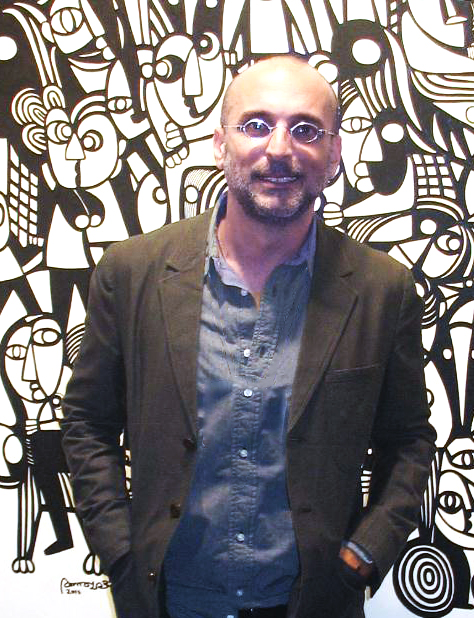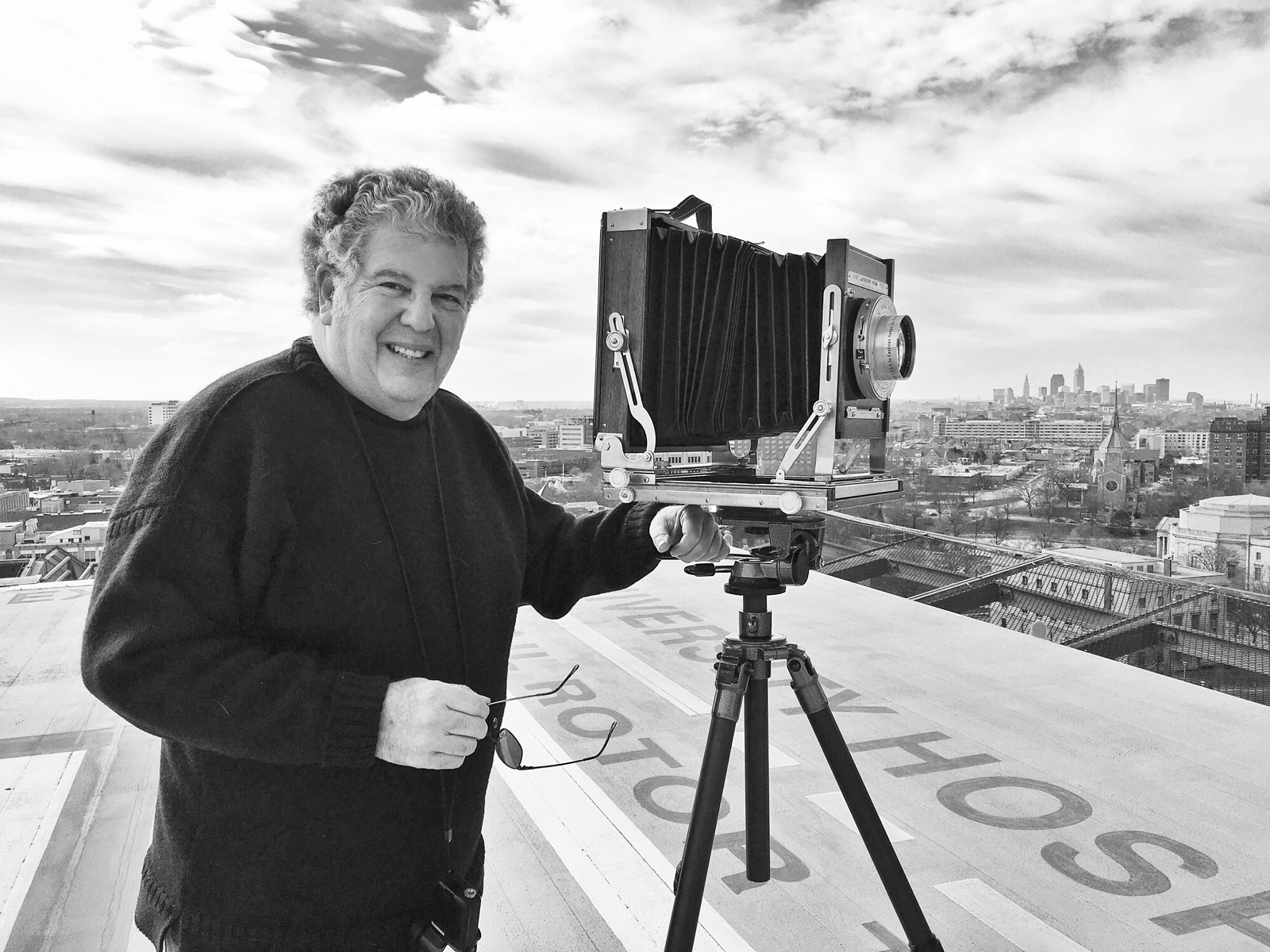HEDGE Gallery’s “Don’t Be Still” stirs emotions, spurs conversation about gender inequality
By Michael C. Butz
After watching several minutes of Robert C. Banks Jr.’s haunting film “Epic Stillness,” which depicts a woman nightmarishly contorting her body while donning a restrictive, eyeless white hood, on the far wall, one will turn around to face the rest of “Don’t Be Still,” HEDGE Gallery’s current exhibition.
John W. Carlson’s striking figurative paintings, capturing that same woman and about a dozen others wearing a little black dress and that same white hood, all motionless but expressing fear, despair and defenselessness through posture and positioning, will be looking back.
In that instant, surrounded by portrayals of anguish and pain, viewers will almost certainly realize they’re surrounded by such women — survivors of psychological or physical abuse and sufferers of institutionalized gender bias, many of whom mask their torment — in real life, too.
As one absorbs the totality of the artwork, personal questions will arise: Who in my life is affected by this? Do I fully understand the scope of this issue? What can I do? What can we do? Where should we start?
That dynamic represents just one powerful moment in an exhibition filled with them. The show is meant to evoke emotional reactions — and it shouldn’t be missed. “Don’t Be Still” is on view through April 27 at HEDGE Gallery, inside 78th Street Studios in Cleveland. An artist talk is scheduled for April 12 at the gallery.

A still from Robert C. Banks Jr.’s “Epic Stillness.”
“Don’t Be Still” doesn’t seek definitive answers those questions, nor can it offer any solutions, but it certainly sparks conversation. The dialogue begins between Banks’ films, of which there are several, and Carlson’s oil paintings. Their interplay is palpable, clearly communicating the artists’ dissatisfaction with the status quo of misogyny.
The films are absent of color and jittery in nature, gritty effects that set the tone for the entire show. They require time to process and offer slightly different experiences depending on whether the viewer is watching up close or from across the gallery. Their cryptic nature and the models’ distressed gestures draw in the viewer, and in engaging with the films, viewers are rewarded with Banks’ masterful storytelling.
Carlson, ever adept at capturing the human condition in his artwork, is on top of his game in this show. Each work — black, white and gray with pink and red highlights — captures a moment of impact. Some are physical, like a last-second attempt to fend off an attacker or falling to the ground. Others are cognitive, like cowering in a corner when succumbing to defeat or holding one’s head in disbelief after coming to a painful realization.
The models are the same in Carlson’s paintings and Banks’ films, a dynamic that offers viewers a fuller perspective. In Carlson’s “Woman #3,” a model, Kai, is shown on the ground with her head lowered in defeat. In Banks’ film, the struggle that leads up to and follows that moment for Kai can be seen. Taking in the bigger picture challenges viewers to do the same in their day-to-day lives, when all too often, snap decisions are made during fleeting interactions.
The conversation continues via the female models depicted in the paintings and films, many of whom wrote impact statements about participating in “Don’t Be Still.” They’re posted next to the Carlson painting that represents them, lending female voices to a show about gender inequality largely produced by two men.

Carlson_Woman#4
“Woman #4” by John W. Carlson
Next to “Woman #5,” the model wrote, “I did not balk at putting the bag on my head, but neither John nor Robert know I am claustrophobic. When we took a break, I left, vomited, returned. I put the bag back on my head.” Her account suggests not only that she believed in the artists and the project, but more importantly, it offers viewers a glimpse into the type of physical and psychological pain endured by women subjected to abuse.
Serving to punctuate the conversation is a plaster cast of the suffocating white hood by Nico Pico Train.
Worn by the models in the films and paintings, the hood (akin to something a Medieval executioner’s target might wear) represents suppression — of voices, views or most anything else women endure on a day-to-day basis. The cast, however, isn’t worn or shown on anyone’s head, symbolic of the hood — and those hardships — being lifted. To suggest such suppression should be a thing of the past, the piece is titled “Relic.”
In addition to conversation, action is incorporated into “Don’t Be Still.” Ten percent of all proceeds from artwork sold at the show will be donated to the Douglas MacArthur Girls Leadership Academy, which is part of the Cleveland Metropolitan School District. The academy aims to provide a rigorous academic program tailored to the way girls learn best as well as hold them accountable to high behavioral expectations designed to make them future leaders, according to its website.
Though “Don’t Be Still” was in the works for about two years — well before sexual harassment scandals in politics, journalism and entertainment started grabbing headlines — it unmistakably adds to the ongoing national dialogue spurred by the #MeToo movement. But it does more than that, too.
Where daily news reports fall short, this exhibition succeeds in personalizing these matters. It communicates complexities, adds nuance, and should spur some level of involvement. Whereas viewers are helpless to assist or aid the women in the artwork that surrounds them in the gallery, such is not the case in real life. In other words, whatever form it takes, don’t be still. CV
On View
WHAT: “Don’t Be Still”
WHO: Robert C. Banks Jr. and John W. Carlson
WHERE: HEDGE Gallery, 1300 W. 78th St., Suite 200, Cleveland
WHEN: Through April 27: the gallery is open from 11 a.m. to 5 p.m. Tuesday through Friday, and on Third Friday (April 20) until 9 p.m.
PROGRAMMING: “Artist Talk with John Carlson and Robert Banks,” 6 to 7:30 p.m. April 12 at HEDGE Gallery
MORE: Read more about Carlson from a 2016 issue of Canvas.
Lead image: A still from Robert C. Banks Jr.’s “Epic Stillness” and “Woman #9” by John W. Carlson.











